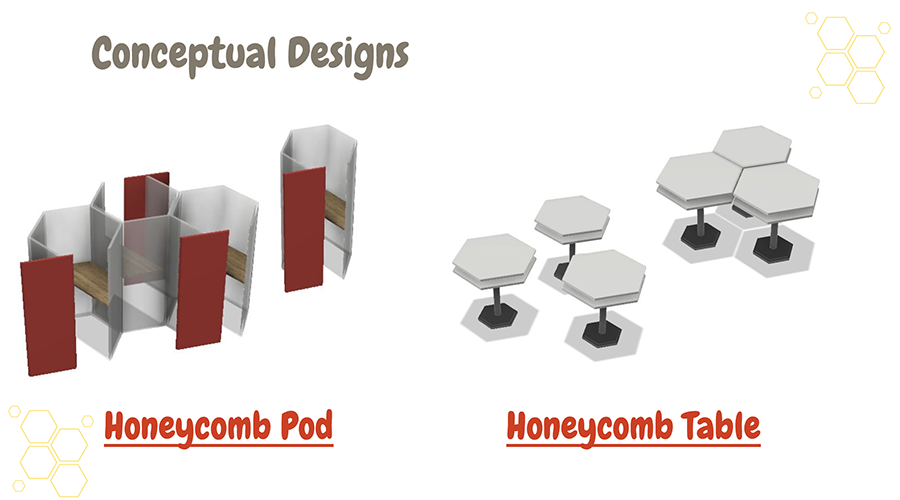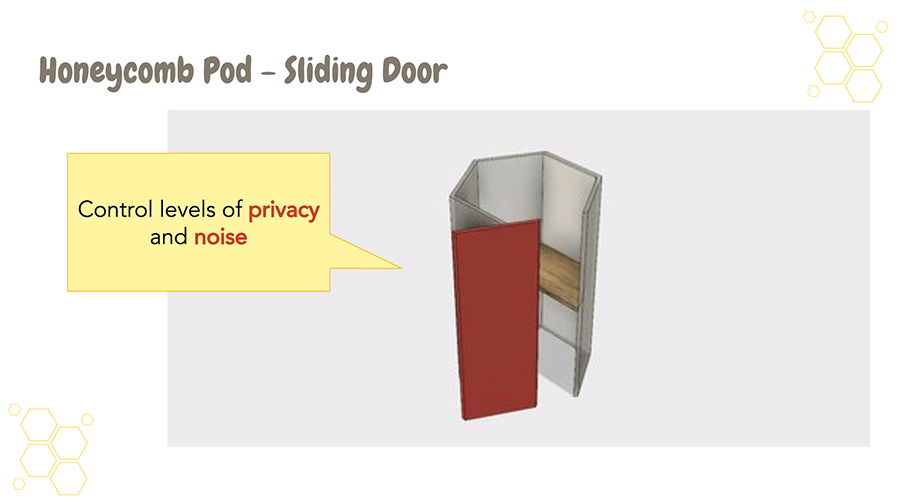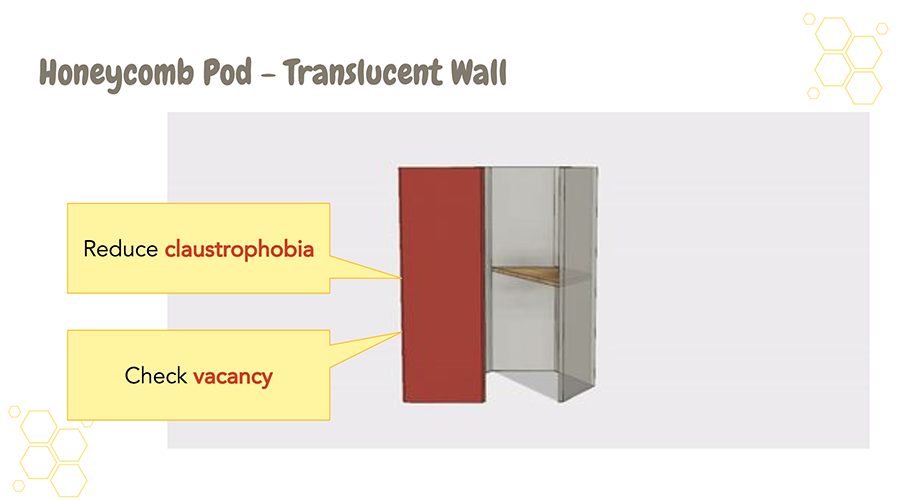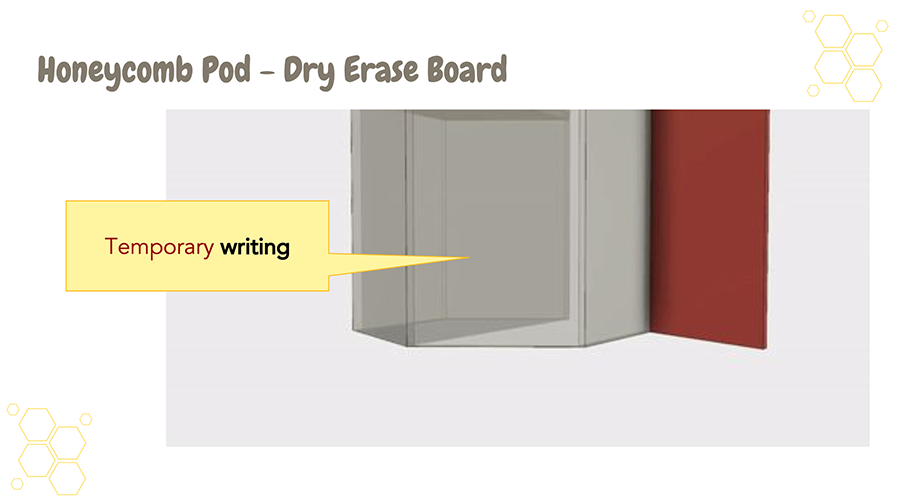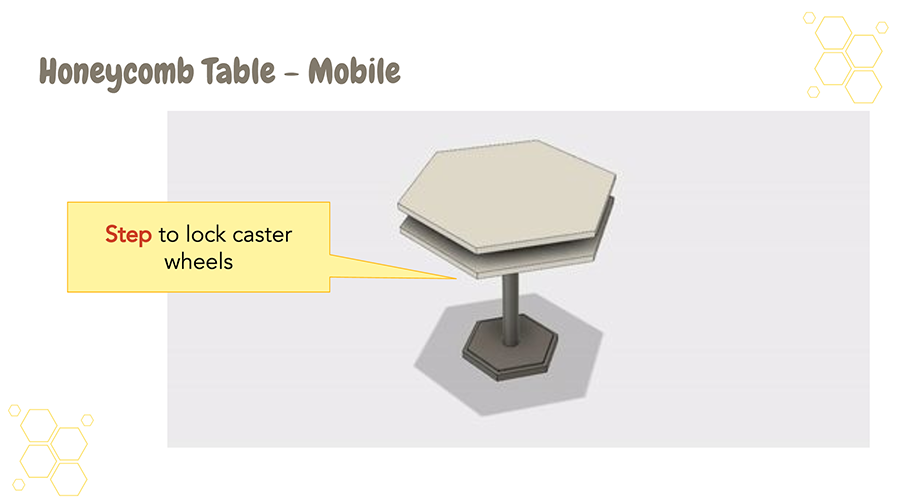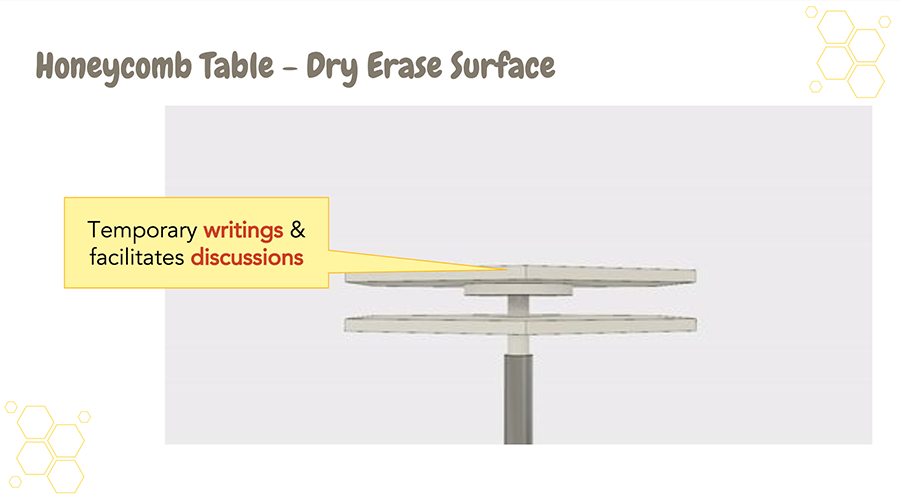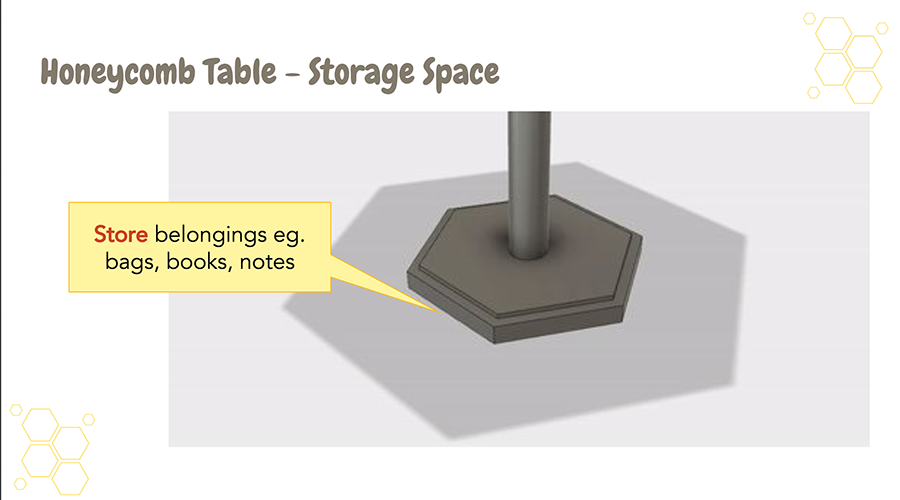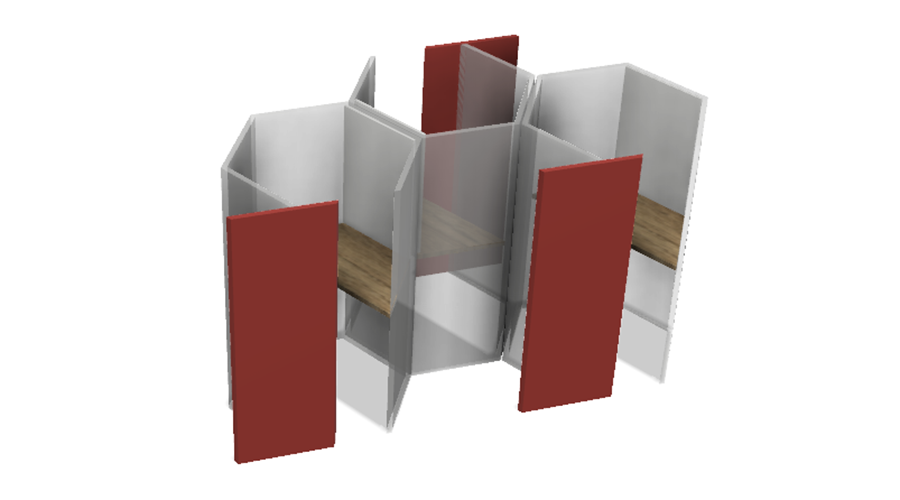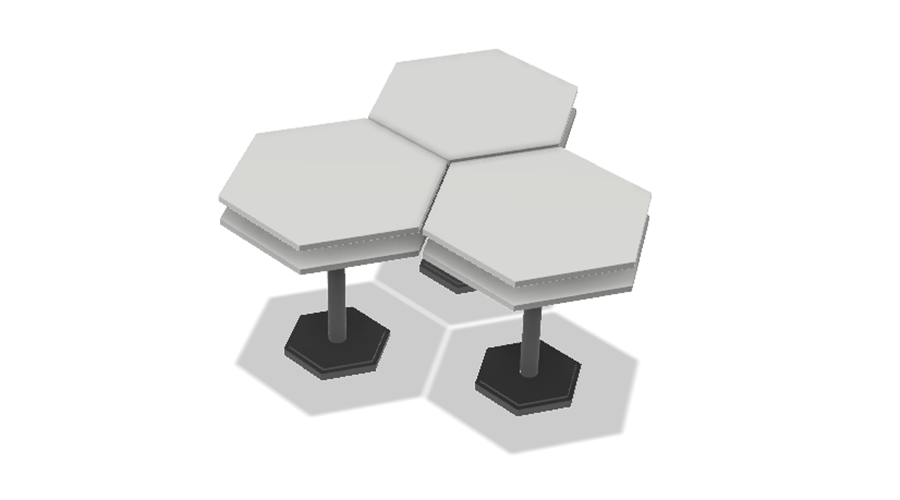HoneycombModular and multi-functional furniture
A team of Northwestern undergraduate students enrolled in Design Thinking and Doing designed Honeycomb, modular and multifunctional furniture to optimize study spaces on campus. Honeycomb has two primary components, a table and a study pod, that can be adjusted to meet the needs of college students.
The Problem
Team member Joanna Ko described how the team initially uncovered the opportunity that led them to design Honeycomb.
“All of us care deeply about the spaces that we study in, especially as college students because this is what we do with most of our time. Northwestern’s study spaces are effective in some aspects, such as the segregation between quiet and collaborative study zones,” said Ko. “But, we found a lot of space for improvement in terms of usability, space efficiency, and aesthetics.”
One of our most influencing a-ha moments was realizing how useful the hexagonal shape was, and how that could be integrated into making the product multifunctional while usable at the same time.
The Process
The team conducted user observation to help them better understand the human need for study spaces on campus.
“Our very first round of user observations were conducted in popular study spaces, such as Norris and Main Library, and we were interested in how many different types of users there were,” said team member Alyssa Liu. “People were working independently, conducting group meetings, having calls, and working individually while sitting in groups. However, they were all using the same sets of static furniture. We wanted to work in that whitespace by designing furniture that works around their widely diverse needs.”
The team collected user feedback from students by interviewing them while they experienced foam-core prototypes and by conducting an online survey. The team found twenty-four unique reasons that people are unhappy with current study spaces and identified the three factors that students consider most when choosing a study space: noise level, workspace size, and the ability to work alone or collaboratively.
“One of our most influencing a-ha moments was realizing how useful the hexagonal shape was, and how that could be integrated into making the product multifunctional while usable at the same time,” said Ko.
The team continued to iterate and improve the design through further rounds of testing. They even tested the dimensions of what became the Honeycomb Table and Study Pod by using yarn and large pieces of paper.
The Solution
Honeycomb is actually two distinct and complementary furniture designs: the Honeycomb Study Pod and the Honeycomb Table.
The Study Pod offers a private study space with a sliding door, translucent wall, and dry erase board.
The Table is mobile, with an option to step on the base to lock the caster wheels. The Table also includes storage space in its base and its height can be adjusted to transform it into a standing desk.
“Refining details, such as the Honeycomb table’s wheel locking mechanism to the dimensions of the study pod, required several rounds of user testing and further ideation,” said Liu.
Collaboration is a key aspect of the designer's mindset and this team attributed their success to effectively working together.
“We each possessed different skill sets that complemented each other well, like Cyndi has experience with CAD so we were able to visualize our concepts really well, and Alyssa has design experience and was able to effectively create a good logo and pitch handout,” said Ko. “It definitely helped that we were all on the same wavelength and were willing to put in hard work to come out with solid results.”
ProgramSegal Design Certificate
Faculty AdviserStacy Benjamin

